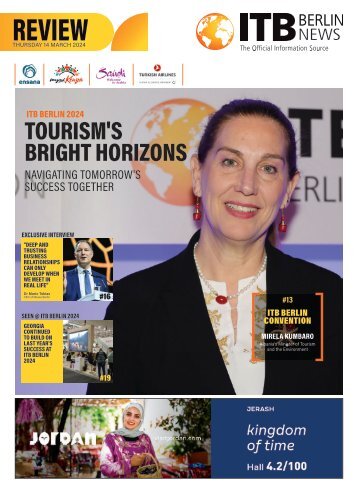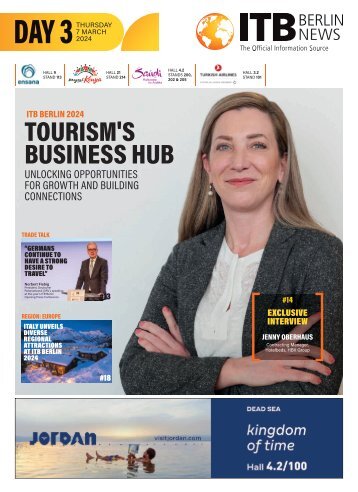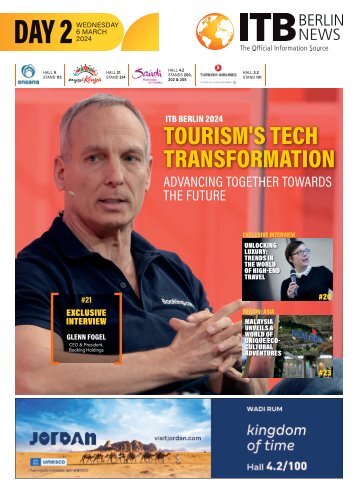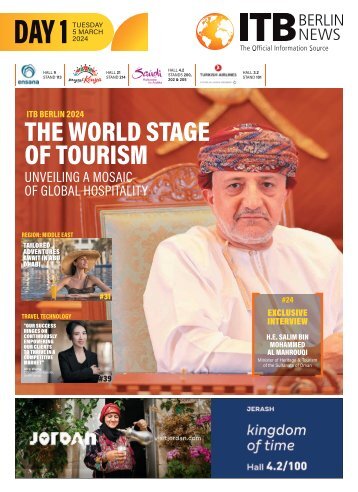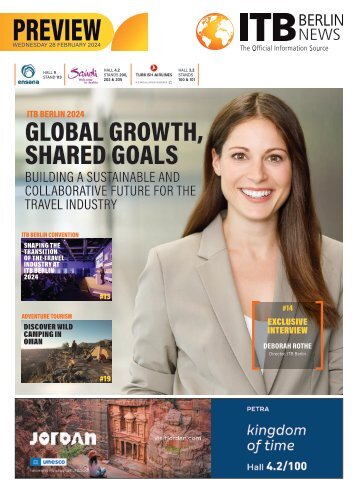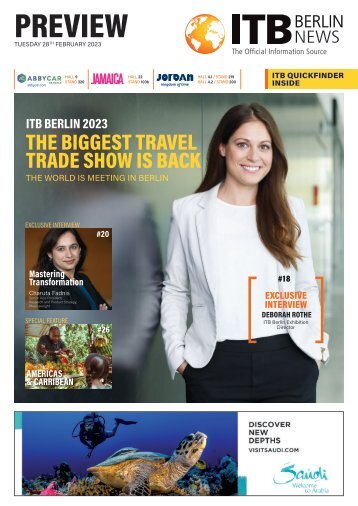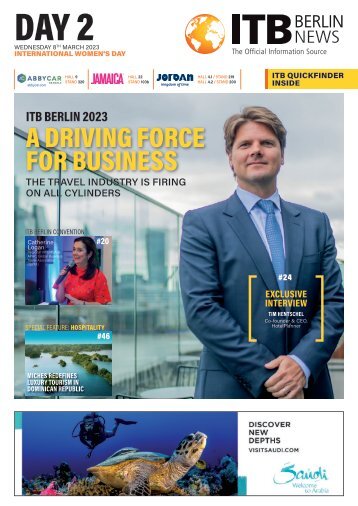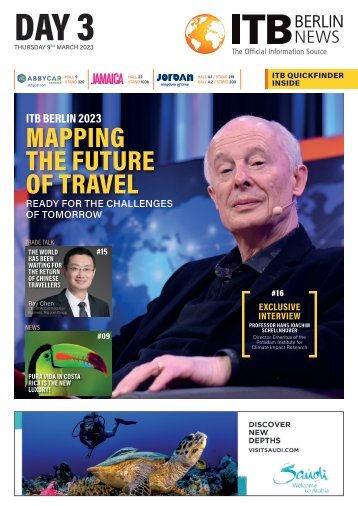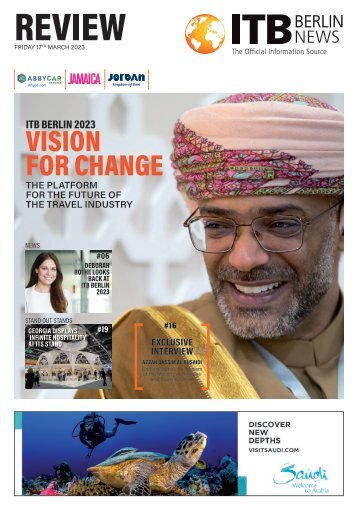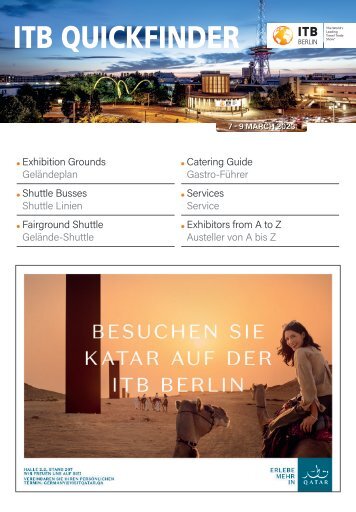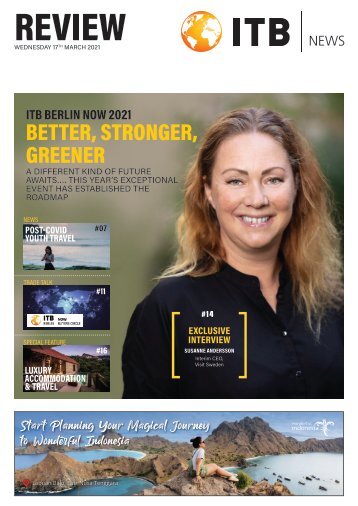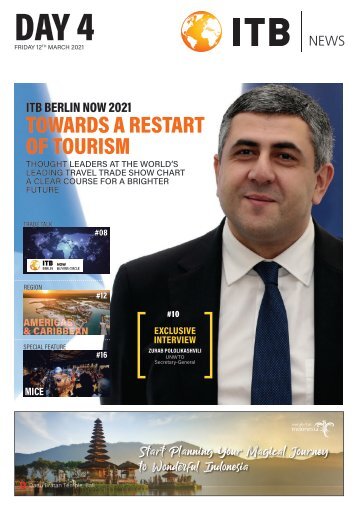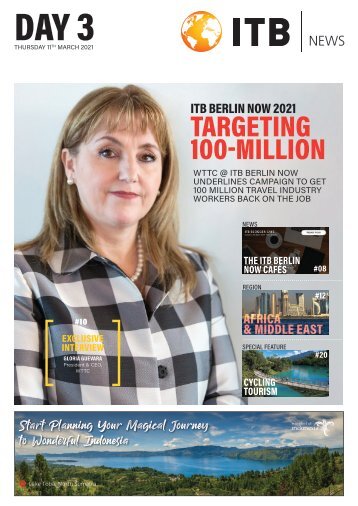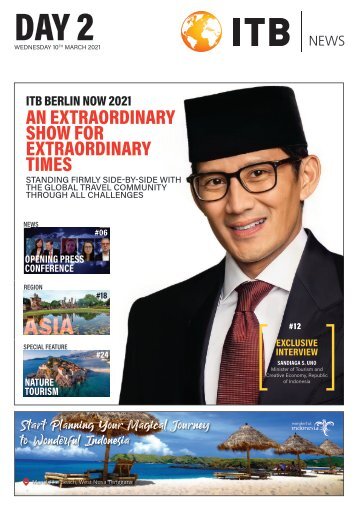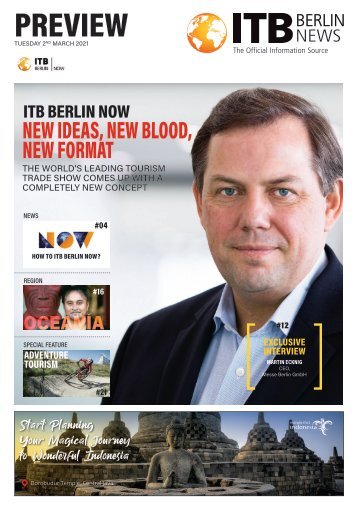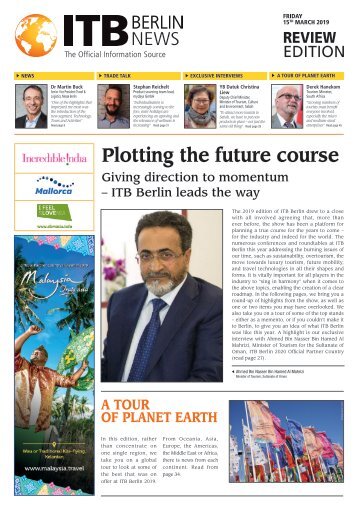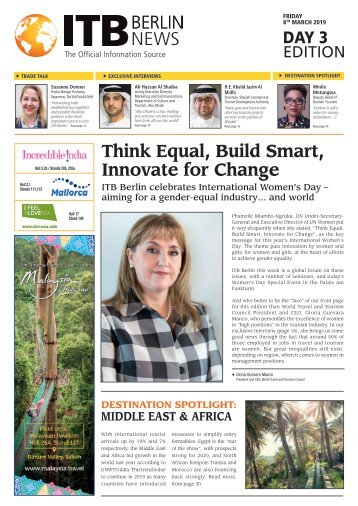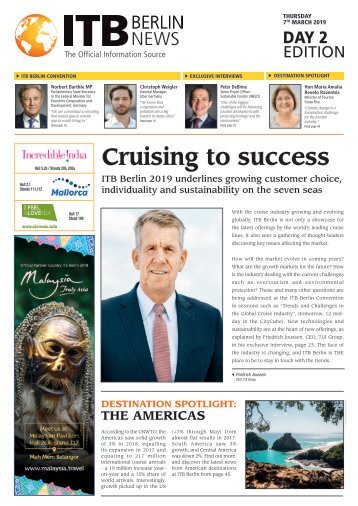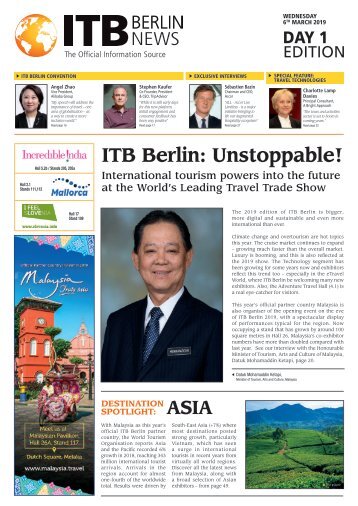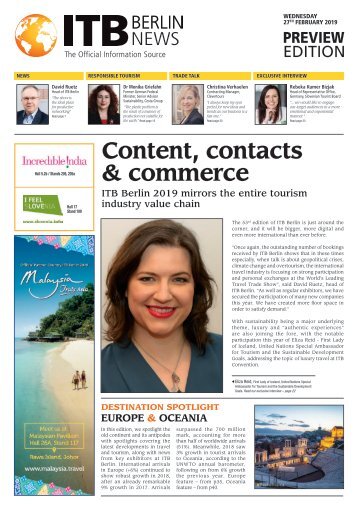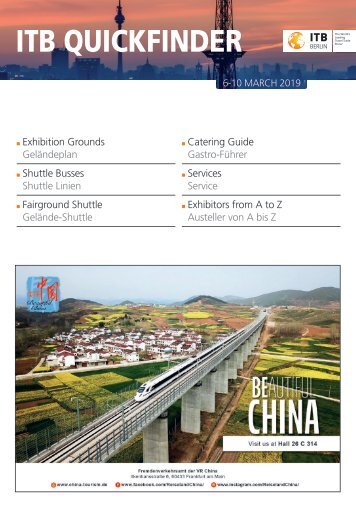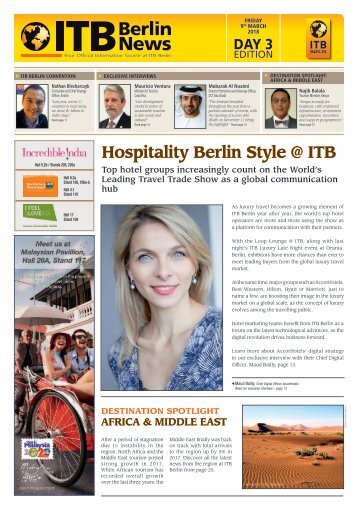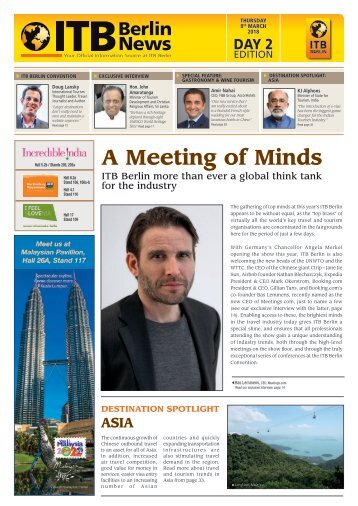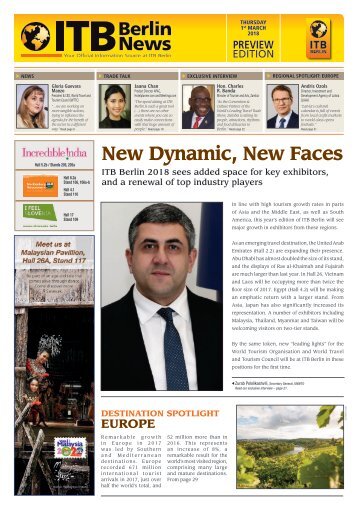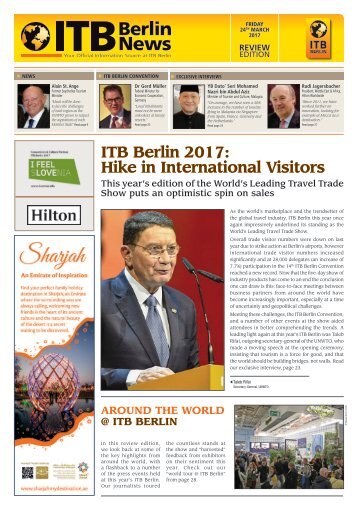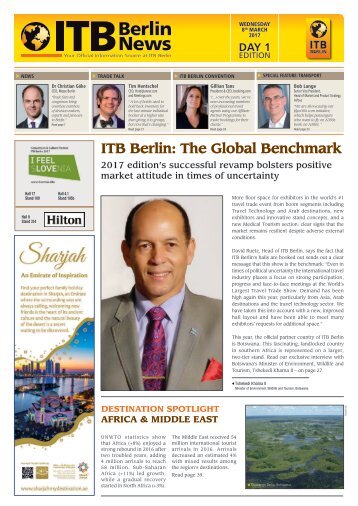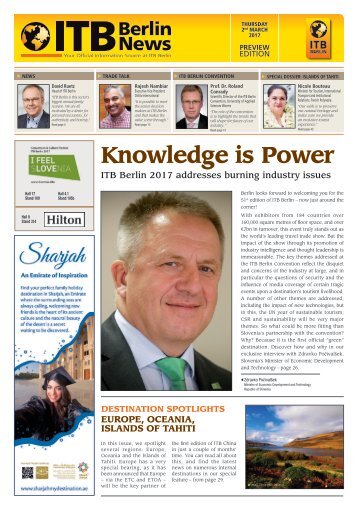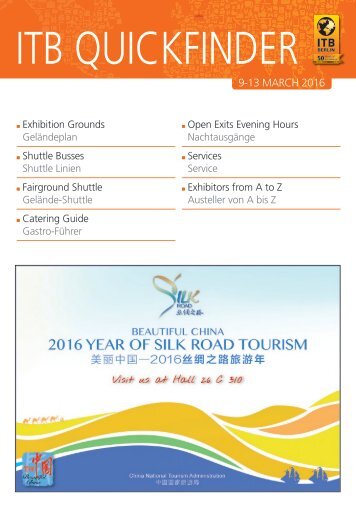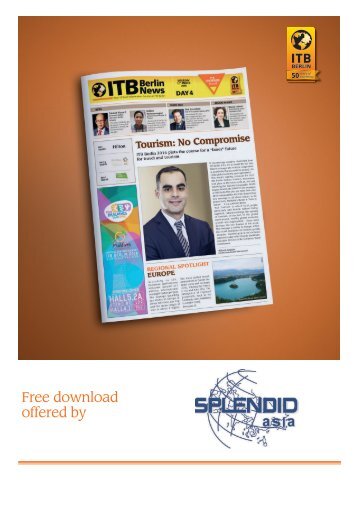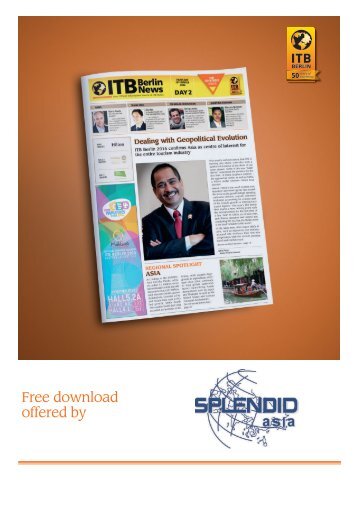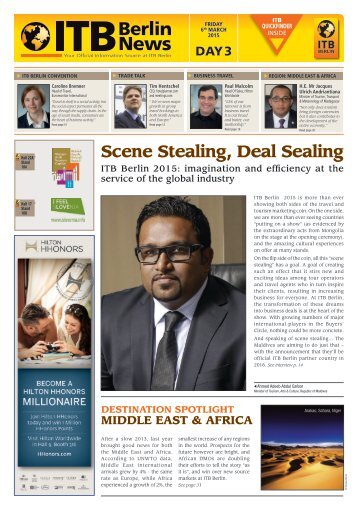
ITB Berlin News 2019 - Day 3 Edition
- Text
- Tourism
- Hotels
- Tours
- Resort
- Resorts
- Berlin
- Exhibitors
- Halle
- Tourismus
- Aussteller
- Www.cleverdis.com
28 SPECIAL FEATURE
28 SPECIAL FEATURE CULTURAL TOURISM ADVERTORIAL When an entire village turns to homestay Sabah artist Ron Galimam REVEALING THE ARTISTIC SPIRIT OF SABAH In the tiny village of Kundasang, about 98km from Kota Kinabalu city, Ranau Walai Tokou Homestay is the closest such accommodation to the majestic Mount Kinabalu. Established in 2002, and the winner of several state and federal tourism awards, Ranau Walai Tokou Homestay features around 100 rooms across the 46 houses dotted up along the steep hillside road. Most homes have breathtaking panoramic view towards Kinabalu Park and the mountain itself. The region is populated primarily by the Dusun tribe, famous for their cultivation of temperate vegetables. “Walai Tokou” is a Dusun term meaning “House of We”, or “Our Home.” The concept of homestay is well suited for visitors who want to experience the village atmosphere, the refreshingly cool temperatures of the foothills of Mount Kinabalu, and clear views of the mountain. It’s the perfect spot to take in the local culture, renowned for the traditional Dusun Bambu music and dances. The local musicians are renowned worldwide, recently featuring in the Asia You’ve Got Talent show. A set of guidelines have been produced for homestay villages. More than ten participating houses and 20 people are needed in a single village, or Kampung, in order for the village to qualify Hall 26a / Stand 117 The Sabah State Art Gallery yesterday opened a solo exhibition of artist Ron Galimam’s work for a month. Galimam’s paintings are mostly about working people in their environment, though he is also drawn to wildlife, which he has been passionate about since he was young. Galimam likes to work in Batik. which is wax on cotton. But rather than using traditional Batik dye, he prefers to apply acrylics which gives him greater control over the creative process. He says: “In the early 90s, when I came back to Sabah, there wasn’t much promotional literature about Sabah, so I put a proposal to the Minister of Tourism who didn’t need much convincing to embrace and fund the promotion of Sabah both for domestic and international tourism.” He set up a design studio in Kota Kinabalu and employed two artists and a secretary: “The first thing I did was to illustrate a character map of Sabah as 99.99% of the world’s population didn’t know where Sabah was. When I presented it, some of the board members were not sure about the pink pygmy elephants, but it was printed. We produced themed images for posters, billboards, buntings, paper bags using recycled paper and TV commercials,” he says. “I noticed recently that some of those promotional materials are still being used.” Hall 26a / Stand 117 The last of the puppeteers? Pak Daim: puppet master While UNESCO designated Wayang Kulit (Malaysian shadow puppetry) as part of world cultural heritage in 2003, it may well not be around much longer, as only a handful of master puppeteers remain… around 10 in fact – in the Wayang Kulit Melayu Traditional Kelantan (WKMTK). Originally based on Hindu epics, shadow puppetry was introduced to Southeast Asia in the 15th century and promoted by Java’s Hindu rulers. Pak Daim (Muhammad Dain Othman) which regularly performs in his Wayang Kulit gallery in Kampung Morak, Kelantan, is under the sponsorship of the Federal Ministry of Tourism and Culture. Today, the traditional figures have made way – in one instance – to those of Star Wars. “If we, the puppeteers, didn’t change ourselves, the art of shadow play would not be popular anymore,” says Daim. “That is why, with my team, we created these new figures following an agreement with Lucas Film, based on an original idea by Tintoy Chuo” Hall 26a / Stand 117 ITB BERLIN NEWS • Friday 8 th March 2019 www.itb-berlin-news.com
SPECIAL FEATURE CULTURAL TOURISM 29 Music turns up the volume for Colombian tourism ADVERTORIAL EUROPEAN CAPITAL OF CULTURE COMES TO SERBIA Colombia’s tourist board, ProColombia, is putting the country’s musical diversity at the heart of its marketing strategy. The South American country is a world musical power, home of infectious rhythms such as cumbia, vallenato, salsa and champeta and boasting dozens of top global artists including J. Balvin, Shakira, Maluma and Carlos Vives. Together with UNWTO and Sound Diplomacy, ProColombia has produced a global guide to music and tourism entitled “Music is the new gastronomy”, which examines the increasingly important relationship between music and tourist destinations. It explores how musical tourism is set to increase in a similar way to the explosion in interest of gastronomy and travel in the last few years. Among other things, the study concludes that music can significantly enhance business opportunities for the tourism sector, while enriching the traveller experience. It says people of all ages are searching for music-based experiences more than ever before, and are prepared to pay for them. It points to figures for the UK showing that music tourism attracted 823,000 overseas tourists, supporting 47,000 jobs and generating €4.6bn. Other figures show Portugal and Spain have seen a 500% rise in music tourists since 2014, mainly for festivals, while Norway’s musical tourism has soared by over 400%. Music is in essence a universal and ubiquitous cultural expression and language. By including music in itineraries and trips, it is possible to drive greater revenue across the tourism sector and it is an excellent opportunity for destinations to differentiate themselves. Furthermore, and in the context of promoting a more sustainable tourism sector, music tourism can contribute to the achievement of the Sustainable Development Goals (SDGs), especially since it is something that can be, and is, practiced by everyone, everywhere – it promotes equality and protects intangible cultural heritage. The new guide was presented yesterday [7 March] at the Colombian booth by ProColombia’s Vice President of Tourism, Julián Guerrero, and representatives of UNWTO and Sound Diplomacy. Reflecting the theme, the booth is itself designed like a large music box where visitors experience a musical tour of the country and can play typical Colombian instruments. The country is represented at ITB Berlin by 20 DMCs, hoteliers and regional officials. The country’s cultural calendar is full of events, fairs and popular festivals in which Colombians celebrate their beliefs and identity through artistic expressions including music, dance, theatre, gastronomy, and religious celebrations. Examples include the Carnival of Barranquilla, one of the most important cultural expressions of the Caribbean region, the Feria de Cali and the Festival de la Leyenda Vallenata Hall 23a / Stand 106 Novi Sad is the first city outside the European Union to be named European Cultural Capital 2021. The programme concept of “Novi Sad 2021” comprises four areas fused together under the slogan “4 new bridges”. Among 200 cultural events taking place in Novi Sad every year, “the first among equals” is EXIT Festival, which is the laureate of 2018 Best European Festival Award. Fresh content will be added to the long list of music, film and theatre festivals and other events. Following the decision to give the prestigious title to Novi Sad, the European Commissioner for Education, Culture, Youth and Sport Tibor Navracsics stated that “the opening of this prestigious European programme to those countries seeking full membership is a way to bring them closer to and reinforce their cultural links with the Union.” Marija Labović, CEO, National Tourism Organisation of Serbia, says: “The title ‘European Cultural Capital 2021’ proclaims the high cultural value of Novi Sad: the city is one of many important cultural centres of Serbia. Visitors can feel and see the unique multicultural character in the cityscape, experience numerous cultural institutions and world-famous festivals, like EXIT. The nomination will act as an important tourism magnet for the region and support the further development of the city’s creative potential” Hall 1.1 / Stand 203 ITB BERLIN NEWS • Friday 8 th March 2019
- Page 1: FRIDAY 8 TH MARCH 2019 DAY 3 EDITIO
- Page 9 and 10: BROUGHT TO YOU BY NEWS 9 couple in
- Page 11 and 12: BROUGHT TO YOU BY NEWS 11 Mongolia.
- Page 13 and 14: BROUGHT TO YOU BY NEWS 13 Medical t
- Page 15 and 16: 15 BROUGHT TO YOU BY Thomas Stöcke
- Page 17 and 18: EXCLUSIVE INTERVIEW 17 like destina
- Page 19: EXCLUSIVE INTERVIEW 19 YOU WILL NEV
- Page 22 and 23: 22 SPECIAL FEATURE GROUP TRAVEL / M
- Page 24 and 25: 24 SPECIAL FEATURE AMUSEMENT PARKS
- Page 27: ADVERTORIAL SPECIAL FEATURE CULTURA
- Page 31 and 32: MIDDLE EAST REGION 31 Sanjive Khosl
- Page 33 and 34: MIDDLE EAST REGION 33 Oman kicks of
- Page 35 and 36: AFRICA REGION 35 Hon. Najib Balala,
- Page 37 and 38: © Thomas Keller HOSPITALITY / REST
- Page 41 and 42: ITB QUICKFINDER 6-10 MARCH 2019 Exh
- Page 43 and 44: Hall 2.2 / Stand 100 Hall 1.1 / Sta
- Page 45 and 46: CATERING GUIDE GASTRO-FÜHRER www.i
- Page 47 and 48: EXHIBITORS FROM A TO Z / AUSTELLER
- Page 49 and 50: A / B EXHIBITORS / AUSSTELLER HALL
- Page 51 and 52: B / C EXHIBITORS / AUSSTELLER HALL
- Page 53 and 54: C / D / E EXHIBITORS / AUSSTELLER H
- Page 55 and 56: E / F / G EXHIBITORS / AUSSTELLER H
- Page 57 and 58: G / H EXHIBITORS / AUSSTELLER HALL
- Page 59 and 60: H / I / J / K / L EXHIBITORS / AUSS
- Page 61 and 62: L / M EXHIBITORS / AUSSTELLER HALL
- Page 63 and 64: M / N / O / P EXHIBITORS / AUSSTELL
- Page 65 and 66: P / Q / R / S EXHIBITORS / AUSSTELL
- Page 67 and 68: S / T EXHIBITORS / AUSSTELLER HALL
- Page 69 and 70: T EXHIBITORS / AUSSTELLER HALL / HA
- Page 71 and 72: T / U / V / W EXHIBITORS / AUSSTELL
Inappropriate
Loading...
Mail this publication
Loading...
Embed
Loading...
